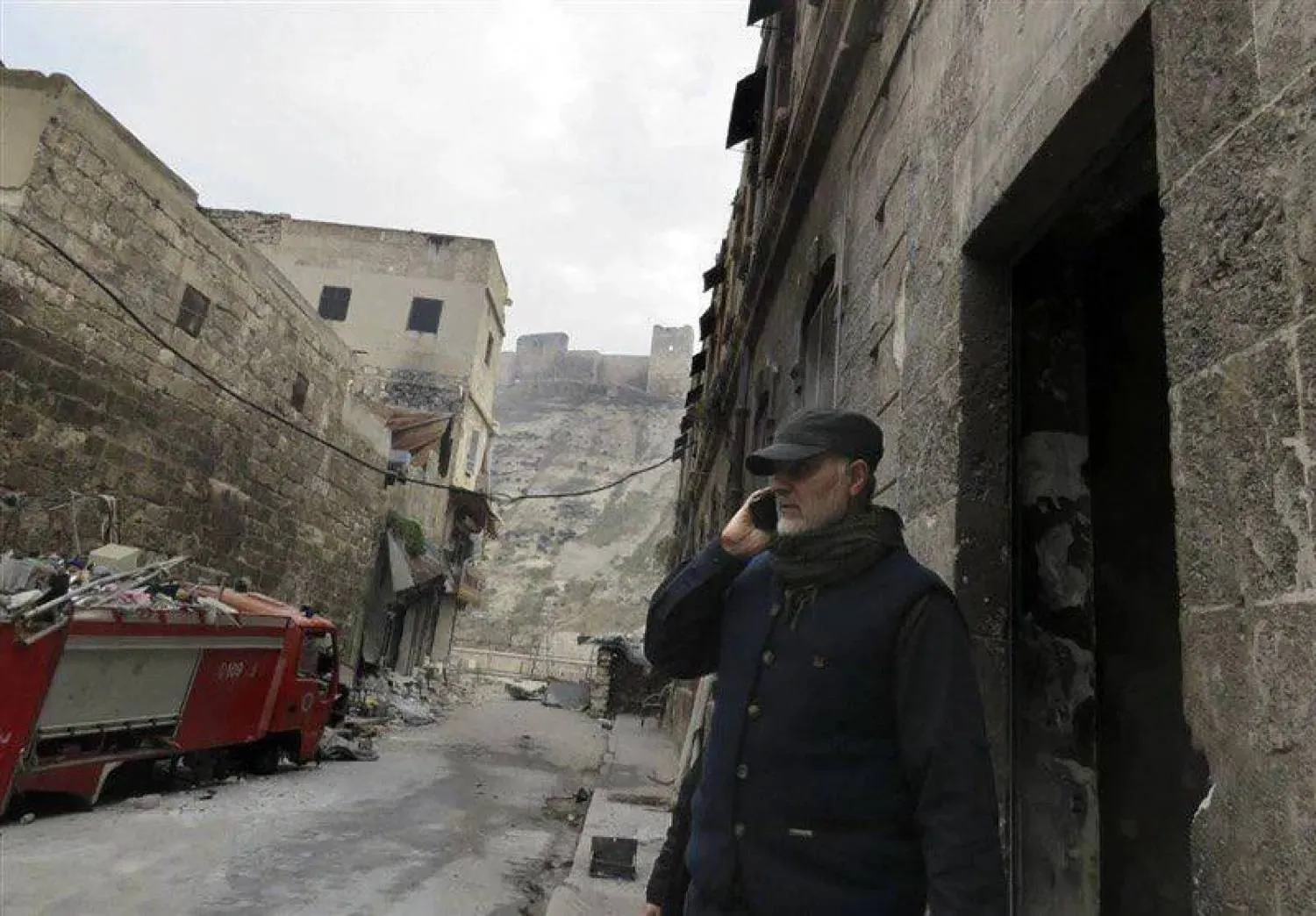Asharq Al-Awsat is closely monitoring the influx of new Syrian refugees into Lebanese territory, specifically the Bekaa region in eastern Lebanon.
These refugees are fleeing dire economic and living conditions in Syria, marking a new wave of displacement following the security-driven causes that led to the initial wave several years ago.
These displaced individuals are coordinating with traffickers who transport them covertly through unauthorized routes into Lebanese territory. This issue has prompted a political and security alert within Lebanon, aiming to prevent the exacerbation of this phenomenon, which has intensified in recent weeks.
One Syrian, Fadi S., aged 24, shared with Asharq Al-Awsat upon his arrival in Baalbek, eastern Lebanon, that he had only a single dollar in his pocket, insufficient to purchase essential supplies from a local supermarket.
His journey from Syria’s Homs to the Lebanese Bekaa region had depleted all his resources, and the $100 sent by his uncle to pay the human trafficker to bring him into Lebanon was exhausted.
Fadi’s intention upon arriving in Lebanon is to seek employment.
The journey Fadi took to Baalbek was arduous, spanning 13 hours and involving passage through unauthorized crossings and rugged paths.
However, it was relatively easy to navigate these obstacles because, as he mentioned, “the smugglers are familiar with hidden points unknown to Syrian and Lebanese security personnel.”
Sometimes, these refugees walk for hours through fields and orchards to reach the heart of Lebanon.
Fadi entered through an unauthorized crossing north of Hermel in the far northeast of Lebanon, along with a group of 17 Syrians, most of whom were young individuals seeking employment.
Upon arrival in Lebanese territory, they dispersed—some sought refuge in Syrian displacement camps in Bekaa, where they had relatives, while others sought shelter with relatives in villages in Baalbek.
The sole motivation behind Fadi’s displacement is the dire economic situation.
“I fled the hellish economic conditions, the unbearable cost of living in Syria, and the significant devaluation of the Syrian pound,” he told Asharq Al-Awsat.
“These factors threaten our access to gas and heating fuel as winter approaches.”
“Life has become exceedingly harsh in Syria due to the exchange rate soaring to 14,000 Syrian pounds for one US dollar, while the daily wages for agricultural and construction workers in Syria do not exceed three dollars (40,000 Syrian pounds),” Fadi further explained.
“Meanwhile, food prices have surged, with the price per kilogram of tomatoes, grapes, and potatoes reaching over 3,000 Syrian pounds.”
“A gallon of oil costs 110,000 Syrian pounds ($8), and a kilogram of sugar has risen to 13,000 Syrian pounds (around $1).”
According to Fadi, these conditions forced him to leave his job in Homs.
He couldn't afford the cost of escaping, so he turned to his uncle living abroad, who sent him $100.
Fadi used this money to pay a trafficking group comprised of Lebanese and Syrians, allowing him to finally have a chance at improving his economic situation and finding work in Lebanon.
Indeed, he found his opportunity in Lebanon, where he secured a job the day after his arrival.
On Wednesday, he mentioned that he had started working in construction labor and was earning a daily wage of $8.
Lebanese security sources confirm that the amount Fadi paid is consistent with what they have seen, but investigations into apprehended individuals fleeing across the border illegally reveal even larger sums.
Speaking to Asharq Al-Awsat under conditions of anonymity, a security source in the Bekaa region revealed that the fees charged by smuggling gangs per person “range from $100 to $600, depending on the nature of the journey.”
The security source also noted that some who illicitly enter Lebanon “use Lebanese territory as a transit route to European countries, Turkey, Egypt, or Greece, via sea and airports.”
“Their affairs are managed by gangs that secure accommodation in Lebanon before facilitating their departure abroad,” added the source.
The economic situation remains the primary driver for the migration of Syrians to Lebanon.
Samia, 32 years old, arrived on Tuesday with her two-year-old son, Mohammed, at a camp near Baalbek through an illegal smuggling route.
She had previously returned to Syria to live with her family, believing that the economic situation in Syria was better than in Lebanon.
However, Samia has now returned to Lebanon, seeking refuge from the “deteriorating economic conditions in Syria.”
She returned once again to the neighboring country to live with her husband, who works as a truck driver there.
Today, Samia resides in the same tent she had abandoned for Syria two months ago, returning through the same smuggling route and with the same traffickers.
“When I left for Syria two months ago through smugglers to live there with my family, the situation was better than it is today. But now, life has become unbearable, and that’s what compelled me to return to Lebanon,” she told Asharq Al-Awsat.
Samia mentions that the cost of the journey, both to enter Syria from Lebanon and return, amounts to $200, as charged by the smugglers for both the outbound and return trips.
Lebanese authorities have taken measures to thwart illegal border crossings.
“As part of combating human trafficking and illegal infiltration across the land borders, units of the Lebanese Army, at various times during the past week, foiled an attempt to infiltrate approximately 1,100 Syrians at the Lebanese-Syrian border,” the Lebanese Army stated in a recent press release.
Smuggling routes span a vast area, starting from Suweiri in southern Bekaa and extending to the far northeast of Lebanon, covering the entire northern border region. Smuggling is considered easier in the north due to the dense vegetation cover that conceals infiltrators.
A security source in eastern Lebanon informed Asharq Al-Awsat that the Lebanese Army, with the assistance of the Border Regiment and intelligence patrols, has successfully controlled both legal and illegal border crossings.
They have also established parallel checkpoints along international highways in northern Bekaa to prevent new waves of refugees from entering, following a recent security lapse.
The source, who requested anonymity, pointed out that those fleeing to Lebanon come from all Syrian regions without exception.
The source added that individuals apprehended by the army are repatriated across the border.









